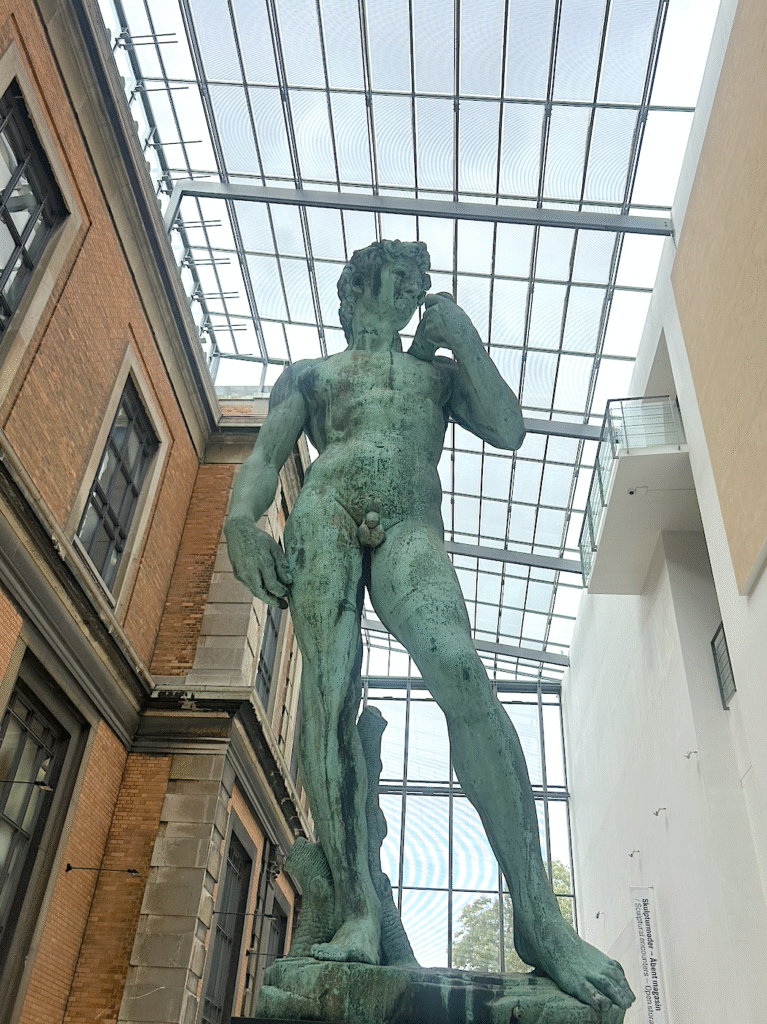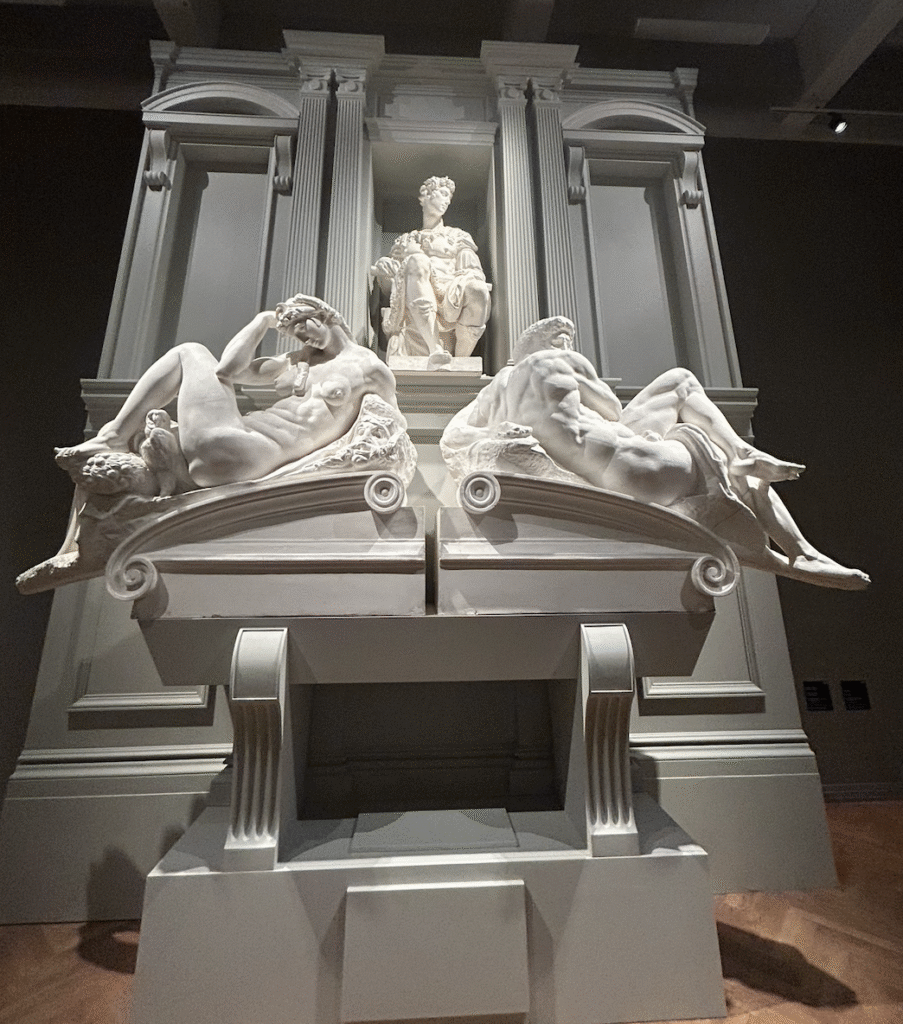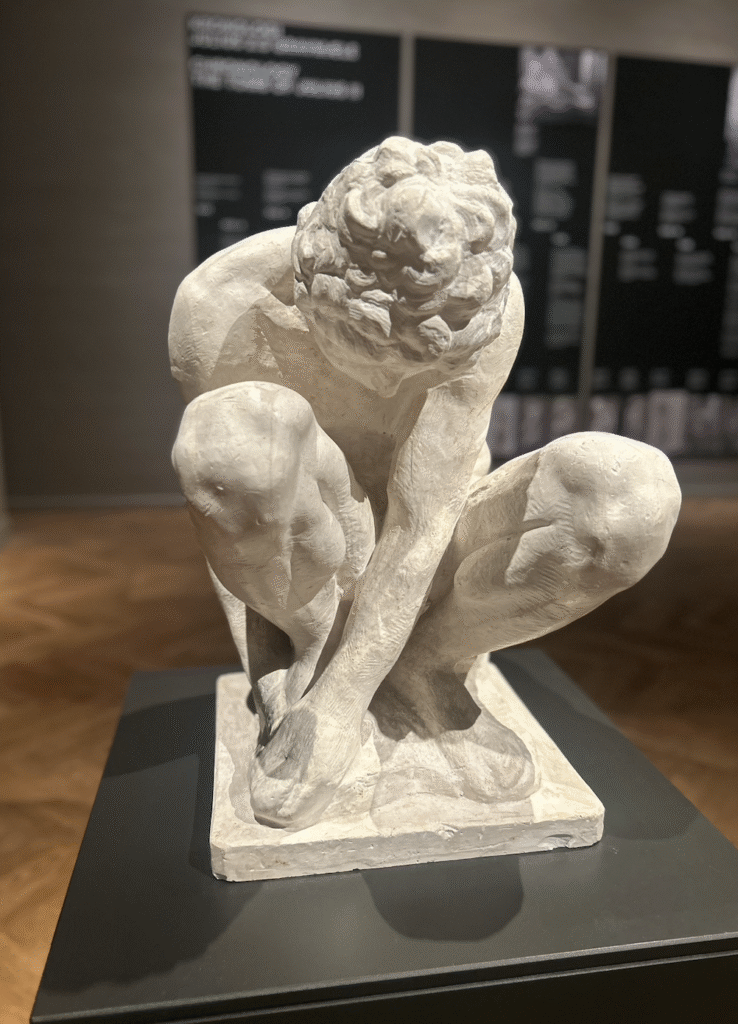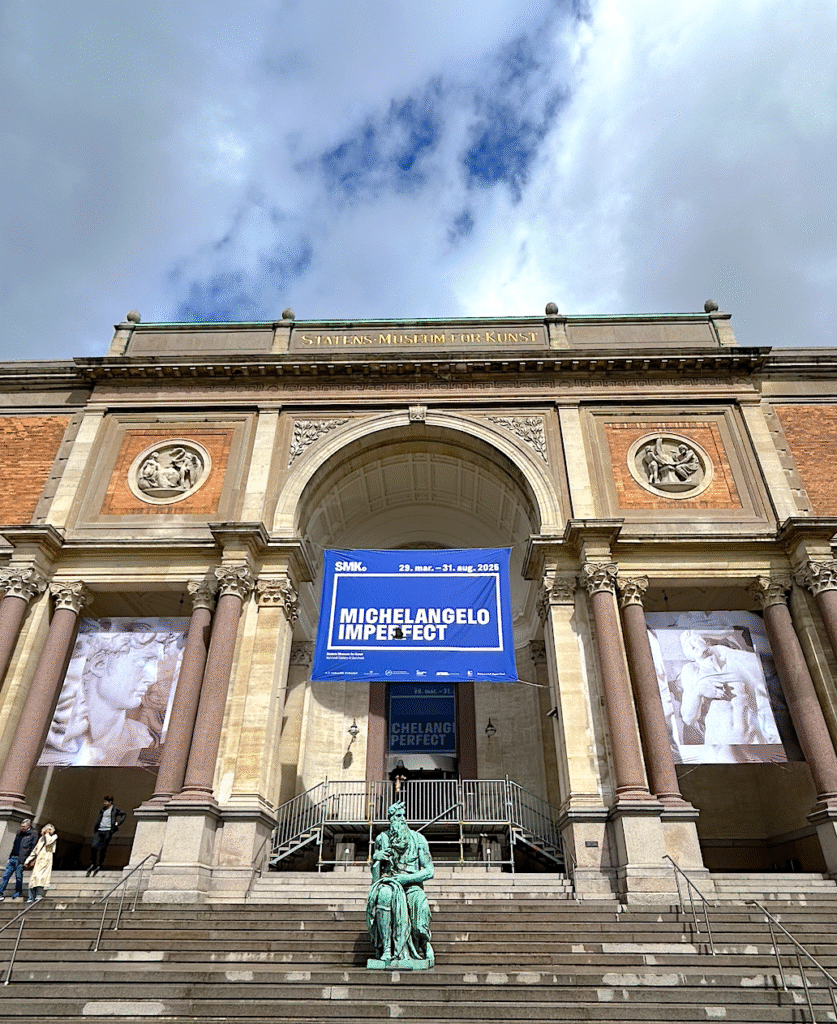Michelangelo Imperfect–a breathtaking new Michelangelo Buonarroti exhibition at the Statens Museum for Kunst (SMK) National Gallery of Denmark–is the most comprehensive display of the Renaissance artist’s sculptural work in 150 years.
Not since the celebration of the 400th anniversary of Michelangelo’s birth in Florence in 1875 has so comprehensive a selection of the artist’s sculptural production been gathered in one place.
A true Renaissance man, Michelangelo cemented his legacy as one of the most talented artists in history with his iconic Sistine Chapel fresco at the Vatican and design for the dome of St. Peter’s Basilica in Rome. His sculptures are known worldwide and SMK presents many of his most celebrated works in Michelangelo Imperfect including a bronze David and Carrara marble Pietà.

If one were to point to a single artist who has contributed fundamentally to the modern perception of art as self-expression in Western culture, it would be the Italian artist Michelangelo Buonarroti (1475–1564). His iconic statue David shows us why. Viewed from the left, the almost five-metre-tall figure is a classically idealised, alert young man ready for battle – but when seen from the other side he changes expression, revealing doubt and hesitation. Michelangelo insisted on reflecting the often conflicted and contradictory inner lives of his figures. He was not the first to do so, but he did it with such consistency that it changed the course of art.
Michelangelo’s focus was almost exclusively on the human body, especially the male form, in which he found endless scope for expressing thoughts, emotions and tensions. He invariably strove for greatness, reaching for the impossible. Already in his lifetime, he was described as ‘il divino’ – the divine. But his art also revolves around the imperfect, the unfinished and the fragile; around being in a state of becoming, anxious, wavering and hesitating. This is apparent in his biblical, mythological and allegorical subjects alike.

The exhibition’s curator Matthias Wivel says: “This is the impossible exhibition: You would never be able to gather Michelangelo’s original sculptures in one place. But with SMK’s collection of historical reproductions in plaster and newly produced facsimiles of the highest quality, we are able to present a perhaps imperfect, yet strikingly complete, overall account of a body of work that changed art forever and remains remarkably poignant today.”
The basis for SMK’s exhibition is its exquisite collection of historical casts after Michelangelo sculptures in the Royal Cast Collection. Most of these were commissioned and cast in 1895–98 for the then-new National Gallery of Denmark (today SMK). Some were added in the twentieth- and early twenty-first century. The collection encompasses the majority of Michelangelo’s most famous sculptures.
In order to get as close as possible to a complete presentation of the Renaissance master’s sculptures, SMK complements these historical plaster casts with newly commissioned and -produced 3D-modelled and cast sculptures – so-called facsimiles – produced in Madrid by Factum Foundation, world leaders in the production of facsimiles, reconstructions and rematerialisations of artworks.

This enables SMK to bring together under one roof reproductions of masterpieces that in the original are located in many different places and with only a few exceptions are never moved, either because they are too fragile to travel, too difficult to move, or, quite simply, too culturally significant. The exhibition also includes original sculptural models (maquettes), drawings, and letters from Michelangelo’s own hand.
Curator, Matthias Wivel comments: “This will be a unique opportunity to experience Michelangelo’s sculptural art as a whole. At the same time, it offers a chance to reflect on the role played by reproduction and copying in art and in our understanding of art. Reproductions have always been part of the way we create and perceive art, but have been somewhat neglected in a museum context in recent times. We see great potential here.”
Michelangelo Buonarroti (1475-1564) created modern art. If one were to identify a single artist responsible for today’s well-established notion of art as self-expression, it would be him. And he did it on a scale unmatched by any contemporary. Despite his successes in other art forms, Michelangelo primarily considered himself a sculptor.

Throughout his long career, Michelangelo worked mainly in his native city of Florence and in papal Rome. He created some of the most iconic works in European art: the sculpture of David (1501-4), the Sistine Chapel ceiling (1508-12), and the dome of Saint Peter’s Basilica (from 1546-64). This occurred during the transformative era we call the Renaissance, a period when classical antiquity’s knowledge was reexamined and merged anew with the Christian worldview. It marked the beginning of the separation of theology and natural science as we know it today.
Michelangelo created images and forms with universal resonance. The sculpture of the doubtful David heading into an impossible battle, and the so-called Pietà in Saint Peter’s Basilica depicting the Virgin Mary holding her dying son, seem simultaneously exalted and profoundly human. Even during his lifetime, the Italian artist was enveloped in the myth of the perfectionist, suffering, and stubborn artist, who throughout his life sought to surpass the exemplary tradition of ancient sculpure.
Even in his own lifetime, Michelangelo was described as ‘divino’—divine—and the perception of him as a genius has defined his legacy up to the present, though today the notion of genius and the traditional ways of writing art history are under revision. Nonetheless, he continues to play a central role. Now, as always, the immediate, emotional presence is fundamental to his art—the way he reveals our complex mental and emotional life through his figures. The imperfect mind within the perfect body.
Michelangelo Imperfect is at SMK Copenhagen until 31st August, 2025.
All featured images © Culturalee




